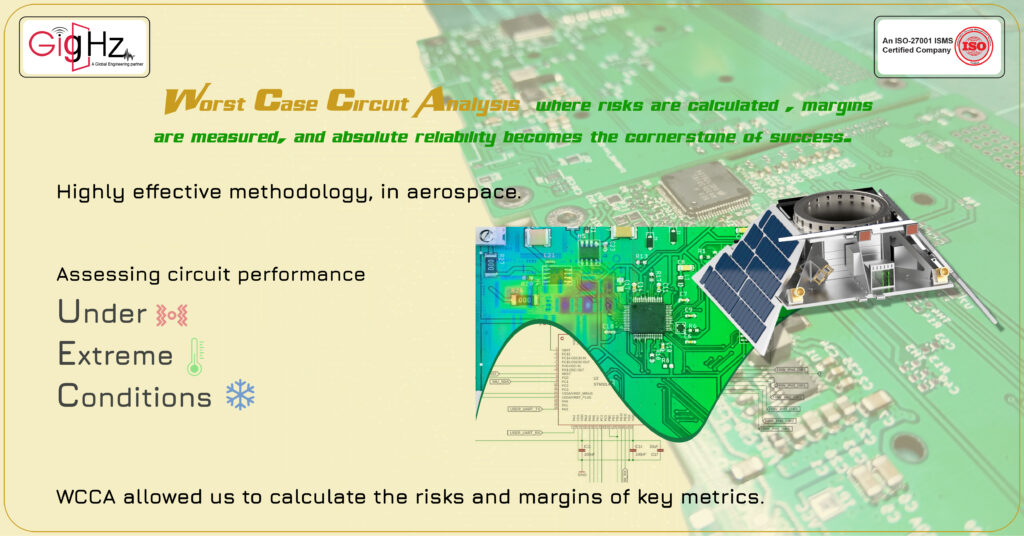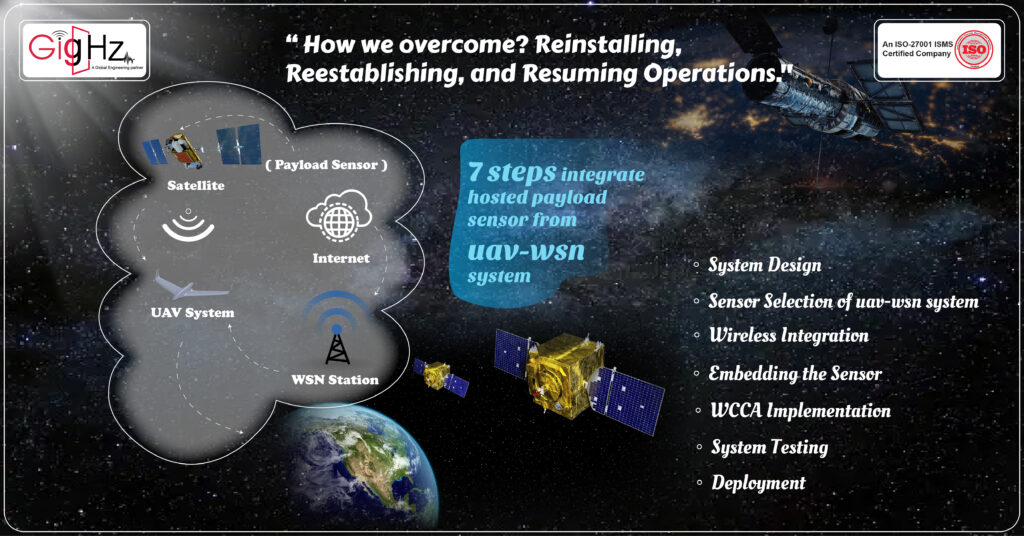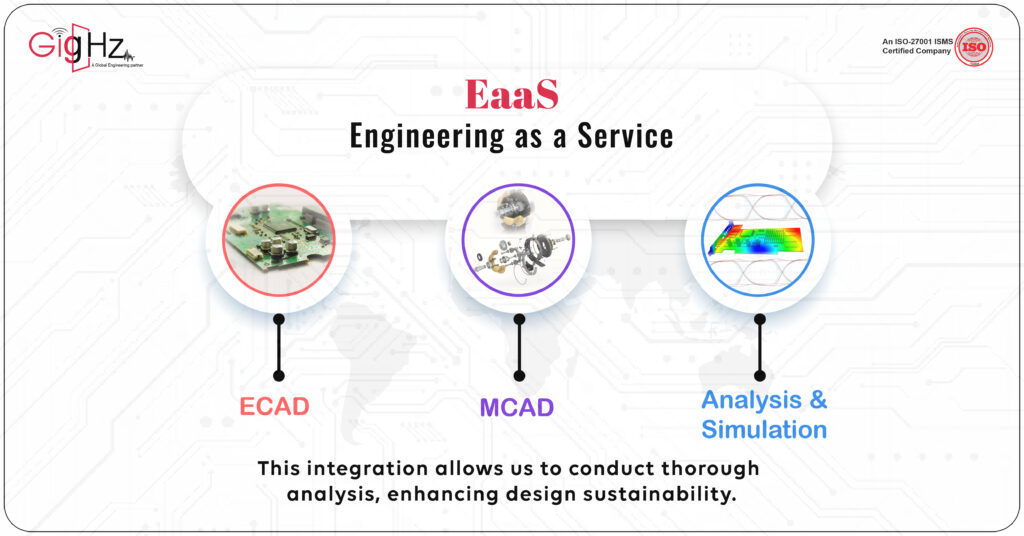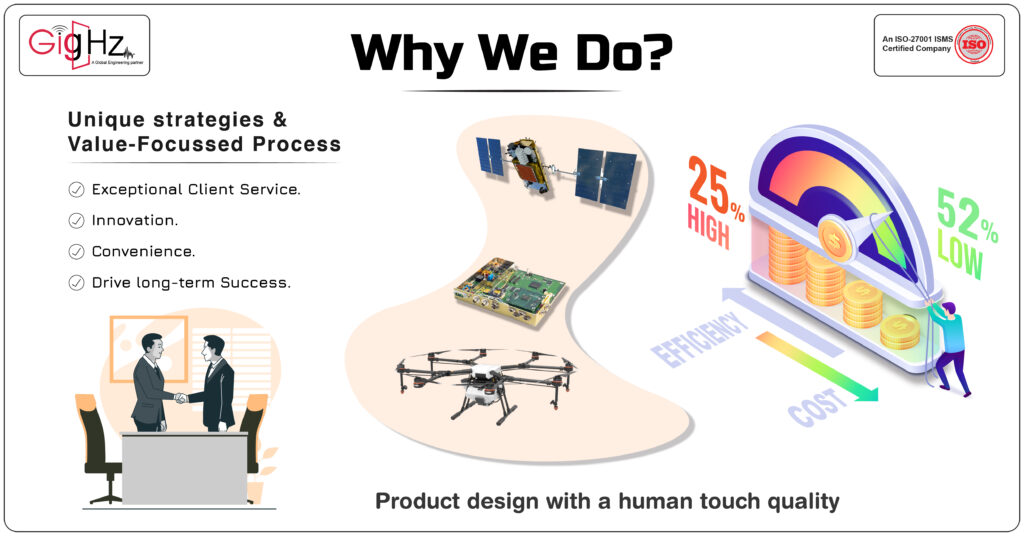7 steps to successfully integrate hosted payload sensor with wcca in systems for efficient monitoring
Here at GigHz, we’re in the business of turning “impossible” into “done.” We thrive on tackling complex challenges and transforming them into innovative solutions. Recently, we had the chance to flex our problem-solving muscles when a client came to us with a tricky situation involving a hosted payload sensor data collection in their spacecraft.

Here at GigHz, we’re in the business of turning “impossible” into “done.”
We thrive on tackling complex challenges and transforming them into innovative solutions.
Recently, we had the chance to flex our problem-solving muscles when a client came to us with a tricky situation involving a hosted payload sensor data collection in their spacecraft.

Category :
Published Date :
January 23, 2024
Category :
Published Date :
January 23, 2024
Category :
Published Date :
January 23, 2024
Using our expertise in Worst Case Circuit Analysis (WCCA) and our distinctive 7-step integration process, we didn’t just solve the problem – we turned it into an opportunity.
Buckle up and join us as we dive into this fascinating journey of high-tech troubleshooting and innovative engineering solutions.
What's the Challenge faced in Hosted payload Sensor from uav-wsn system?
Our client was grappling with unexpected performance issues related to their hosted payload sensor, a critical component in their spacecraft. This sensor was a key player in an air-ground multi-sensor monitoring system, an exciting trend that’s reshaping the way we collect field information.
The challenge was to quickly identify and rectify the issue without compromising the efficiency of the monitoring system.
These sensors are designed to integrate seamlessly into the system, consistently collecting data and transmitting it wirelessly back to base. But something was off. The usual flow of information was disrupted, and our client was left scratching their heads.
The sensor was part of a larger integrated system, a network that combined ground sensors, unmanned aerial vehicles(uav), and other elements in a system. This system was designed to efficiently collect, process, and analyze data, providing invaluable insights into field.
The problem required a delicate balancing act.
On one hand, we needed to identify and address the issue with the hosted payload sensor swiftly. On the other hand, we had to ensure that the rest of the monitoring system remained unaffected.
We also had to consider the wireless aspect of the system.
Wireless sensor networks(wsn) are complex, and any changes or disruptions can have far-reaching effects. Plus, the integration of unmanned aerial vehicles added another layer of complexity to the situation.
Power of Worst-Case Circuit Analysis(wcca) in Monitoring System

Worst Case Circuit Analysis (WCCA) is a highly effective methodology, particularly in the aerospace sector.
It is capable of assessing circuit performance under extreme conditions, making it invaluable in environments like space, where components are exposed to harsh conditions and absolute reliability is crucial.
In our recent challenge with a critical sensor in an air-ground multi-sensor monitoring system, WCCA proved to be instrumental.
WCCA allowed us to calculate the risks and margins of key metrics.
This not only gave us insight into potential vulnerabilities but also provided us with a clear picture of the overall robustness of the system.
We could identify areas that could withstand stress and those that needed fortification, ensuring that the system was prepared for any eventuality.
How we overcome the Challenge in Hosted Payload sensor integrate with wcca?
Our Unique “7 steps to successfully integrate hosted payload sensor with wcca in Aerospace from uav-wsn system”

System Design
We started by revisiting the system design and its model.
Our team meticulously examined the architecture of integrated system, focusing on its functional requirements, data flow, and structural layout.
This process ensured alignment with the specific application needs of the hosted payload sensor, a rapidly evolving field that leverages technology for efficient monitoring and management.
Our system needed to handle the high data rates required for real-time monitoring and have sufficient power backup for prolonged operations.
Sensor Selection of uav-wsn system
In the sensor selection phase, we reassessed the compatibility of the chosen sensor with the UAV and the other system components.
We evaluated the sensor’s technical specifications of data processing, such as its measurement range, accuracy, power consumption, and physical dimensions.
These factors are crucial in space technology where accurate and reliable data collection is critical for informed decision-making.
Wireless Integration
During the wireless integration phase, we scrutinized the wireless sensor networks, ensuring seamless communication between the sensors and the UAV.
This process involved validating the network protocols, checking signal strength, and testing the data transmission rate.
The robustness of the wireless network against potential interferences was also checked, given its importance in providing real-time information.
Embedding the Sensor
When embedding the sensor in the UAV, we ensured secure mounting to withstand flight dynamics and environmental factors of intelligent data processing. This is crucial in air-ground multi-sensor monitoring systems where the sensor’s performance can significantly impact the quality of field information collected.
We also ensured the proper establishment of the sensor’s electrical connections for reliable data transmission and power supply.
WCCA Implementation
We reapplied the Worst Case Circuit Analysis (WCCA) on integrated system to identify potential issues impacting system performance under extreme conditions.
This step, often used in system-based approaches, involved simulating different scenarios, including maximum and minimum operating voltages, temperatures, and load conditions, to identify any underperforming components.
System Testing
After implementing changes based on the WCCA, we conducted testing in communication point of view for system for efficient monitoring. This involved bench testing to validate the system’s performance in a controlled environment and flight testing to verify its operation under real-world conditions.
This phase is critical to ensure the reliability of data collection and overall system performance.
Deployment
Following successful testing, we redeployed the system. This involved reinstalling the sensor into the UAV, re-establishing the wireless sensor network, and resuming UAV operations.
Post-deployment, we continued to monitor the system’s performance to ensure it functioned optimally, an important aspect of maintaining the promising trend for field information collection.
Our systematic approach allowed us to effectively diagnose and resolve issues with the hosted payload sensor, ensuring the reliability and efficiency.
The diagnosis - System for Efficient Monitoring
Our team, armed with the insights from the WCCA, embarked on a meticulous investigation to pinpoint the root cause of the sensor issues. We identified that a specific component within the circuit was not performing as expected under certain worst-case conditions. This component’s erratic behavior under specific voltage and temperature extremes was causing the overall system to behave unpredictably.
After examining the circuit layout, we found that a certain resistor was causing a voltage drop that exceeded its designated limits under extreme conditions. This excessive voltage drop was causing the sensor to misread the signals, leading to the erratic performance.
The Solution - System for Efficient Manufacturing
Upon identifying the problematic component, we brainstormed various strategies to resolve the issue. The most viable solution was to replace the component with a more robust alternative that could withstand broader voltage and temperature ranges without compromising performance.
We replaced the problematic resistor with a military-grade, high-precision resistor designed to operate reliably under extreme environmental conditions. Once the component was replaced, we re-applied WCCA to ensure that the changes had not inadvertently introduced new issues. The results were promising: the replacement component performed remarkably well under worst-case conditions, and the overall system stability improved significantly.
After implementing these changes, we conducted a series of stress tests under varying conditions to validate the effectiveness of our solution. The hosted payload sensor now performed flawlessly, consistently delivering accurate data.
This experience not only resolved the immediate issue but also provided valuable insights that will inform our future projects. It was a testament to the power of WCCA and the importance of perseverance and meticulousness in problem-solving.
Engineering as a Service(EaaS)

At the heart of our expertise in electronics, we focus on seamlessly integrating ECAD (Electronic Computer-Aided Design), MCAD (Mechanical Computer-Aided Design), and Analysis & Simulation as EaaS. This unique integration optimizes design, production, and operational workflows, ensuring efficiency at every step.
By combining these disciplines, we conduct comprehensive analyses that enhance the reliability of our designs while fostering creative problem-solving. This approach consistently yields top-notch results in a cost-effective manner, even when faced with tight timelines. It is the perfect combination of innovation and durability.
At our core, we prioritize the seamless integration of ECAD, MCAD, and Analysis & Simulation to deliver high-quality outcomes that meet and exceed expectations. With a focus on optimization, reliability, and efficiency, we drive forward-thinking solutions in the field of electronics.
Why we do?

Diving into the complexities of Worst-Case Circuit Analysis(wcca) for hosted payload sensor. Despite these detailed challenges, our standout quality arises from using innovative methods strategically and focusing on value-centered processes.
This unique mix helps us achieve impressive outcomes—a remarkable 52% cut in costs while boosting operational efficiency by 25%.
Our approach not only handles these complexities but also brings noticeable improvements, setting new standards for efficiency and cost-effectiveness in the design.
Conclusion
The integration of hosted payload sensor and WCCA in UAV-WSN systems provides an efficient solution for large-scale monitoring and UAV for data collection in aerospace applications. By combining wireless sensor networks (WSNs) and unmanned aerial vehicles (UAVs), this integrated system architecture enables modeling and analysis of the seamless coordination and efficient use of resources with processing of data.
The collaborative UAV-WSN network within the communication radius design and analysis facilitates effective data collection and relaying, contributing to enhanced situational awareness and informed decision-making. The system design incorporates intelligent data processing algorithms to optimize the processing of collected data, improving the precision and accuracy of monitoring applications.
This integration offers numerous benefits, including reduced maintenance and operational costs, as well as the ability to monitor large areas efficiently. The use of UAVs alongside WSNs allows for flexible and adaptive monitoring, making it particularly suitable for applications in agriculture, where precise monitoring is crucial.
“Discover our Specialities. Visit our Services Page. https://gighz.net/services/
#HostedPayloadRevolution #SensorInnovation #HurdleFreeIntegration #FutureOfMonitoring #WCCAIntegration #EngineersOfTheFuture


